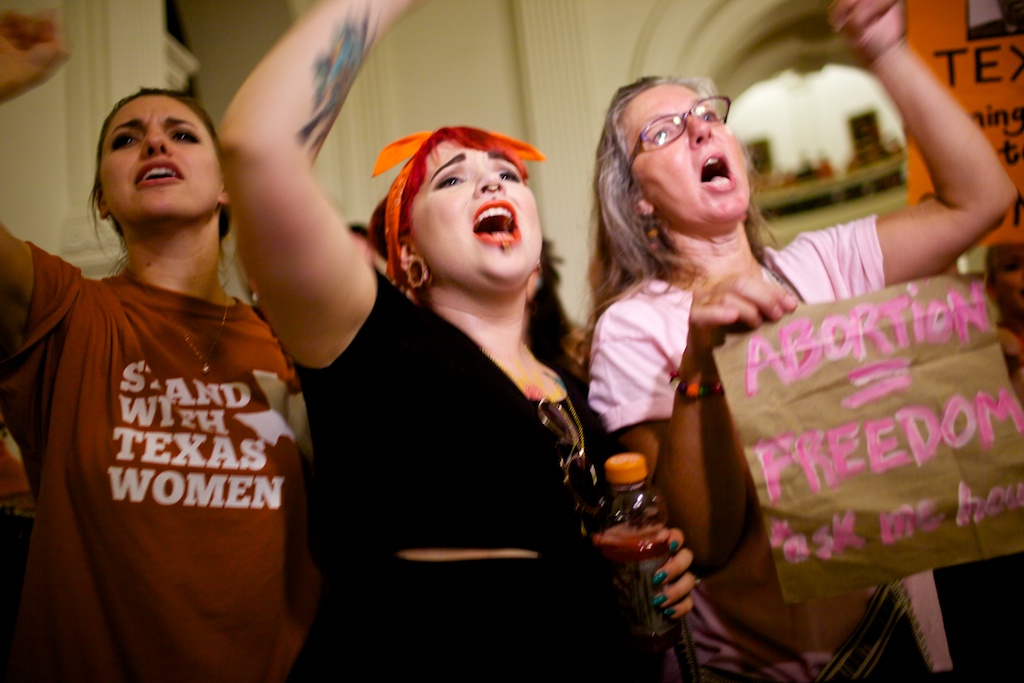
Legislators began tackling issues like funding family planning, equal economic opportunity for women and justice for sexual assault survivors in the early 1970s. Their work continues a half-century later.
–
by Kate Groetzinger
February 19, 2019
Senfronia Thompson was elected to the Texas House of Representatives in 1972, two years after Congress passed the landmark Title X law to fund reproductive health care. She took office a month before the Supreme Court ruled on Roe v. Wade.
“It was a burst of new issues, new energy, new ideas,” she said. “There were so many issues that impacted women, and it was the emerging of being able to bring those to the table.”
The Houston Democrat, now the longest-serving woman in the history of the Texas Legislature, was one of just five women in the House at the time. Together, they passed bills that granted women access to equal credit, made it illegal to fire public school teachers who became pregnant, and reformed rape statutes, which once required survivors to prove that they had shown “earnest resistance.”
“Can you believe that a woman could not get a credit card in her own name, even if she had money, could not buy property?” Thompson said.

In her nearly five decades under the pink dome, Thompson has seen huge gains in women’s rights and representation. But she’s quick to point out that many challenges remain. Women make up only 23 percent of the Legislature, and they’re still fighting the battles that Thompson and her colleagues started in the 1970s. In the intervening decades, the state has failed to consistently fund family planning, protect women from economic discrimination and deliver justice to survivors of sexual assault.
Progress has come in fits and starts. In 2009, female representation at the Capitol hit an all-time high of 43 lawmakers, and state funding of family planning programs was relatively noncontroversial. But the 2011 election of President Obama, and the tea party backlash that followed, shifted the political climate at the Capitol dramatically, as state Representative Donna Howard, D-Austin, recalls.
“Not only were [the programs] improving outcomes, they were saving taxpayer dollars. Paying for contraceptives and well-woman checks is significantly less expensive than paying for unplanned pregnancies,” she said. “All of that started to be challenged in 2011. Since then it’s been constant.”
In Obama’s first midterm election, the tea party wave wiped out 24 Texas House Democrats. With unfettered control of Texas government, Republican lawmakers slashed the state’s family planning budget by two-thirds in 2011. As a result, the number of women served by these programs dropped by almost half.
Then, in 2013, the Legislature imposed sweeping restrictions on abortion clinics. More than half of Texas’ abortion clinics closed, mostly in rural areas of the state, forcing some women to travel to neighboring states or even Mexico to access the constitutionally protected procedure.

That same year, Thompson filed a bill that would have made it illegal to pay men more for doing the same work as women if their experience and qualifications are the same. After passing both the House and the Senate, it was vetoed by then-Governor Rick Perry, leaving Texas as one of six states without equal pay laws for women in the private sector.
But these setbacks, as well as President Trump’s election and the #MeToo movement, fueled change. Women spoke up about the historically misogynistic behavior of male lawmakers and staffers in Texas, and a list of “bad men” at the Capitol surfaced in November 2017. A year later, a record number of women ran to replace them.
The November election shifted power at the Texas Capitol away from the anti-woman far-right by putting more women and Democrats into office. Eight women joined the Texas House and one joined the state Senate. While there was one more woman in the 2009 Legislature, the number of women in the Legislature is at its second-highest this session, 42.
“During the interim, the #MeToo movement kicked open the door for us to do a lot more.”
Thompson is cautiously optimistic about what the change will mean for legislation like her equal pay bill, which she re-filed this session.
“Whether we’ll be able to achieve equal pay, I don’t know. But if we can make improvements in postpartum depression and mental health and working conditions and public education, that would be a great plus,” Thompson said.
There’s reason to believe the increase in the number of women in the Legislature will translate into more progressive policies that boost gender equality. Researchers have found a correlation between the number of women in a state legislature and the number of feminist policies passed, especially when the women are Democrats. The same study, by the Institute for Women’s Policy Research at George Washington University, also found a correlation between such policies and women’s voting rates.
“I think women are speaking loudly and clearly about their desire for change,” said state Representative Victoria Neave, D-Dallas. “Women elected more women to put these issues in the limelight.”

Neave filed a bill to crowdfund the testing of rape kits last session, after a 2011 law by Wendy Davis revealed a staggering 20,000 rape kits were sitting untested in police stations across the state. About 2,000 kits remained untested in 2017, despite $11 million of funding allocated by the Legislature in 2013. With new kits stacking up every day, the state has not yet figured out how to keep up with them.
There’s hope that too could change this session. Governor Greg Abbott named sexual assault legislation as a priority, but not an emergency item, in his State of the State address. The Senate budget for 2020-2021 currently includes $8.5 million in new funding for rape crisis centers and sexual assault nurse examiners, along with money to increase the capacity of crime labs with an emphasis on keeping up with rape kit testing. The House budget includes a $7.7 million increase in funding for rape crisis centers, and Neave said her office is working with Howard, who is on the House Appropriations Committee, to include dedicated funding for rape kit testing in the House budget.
“We were raising the flag and shining a spotlight on this issue that affected women disproportionately last session,” Neave said. “During the interim, the #MeToo movement kicked open the door for us to do a lot more.”



